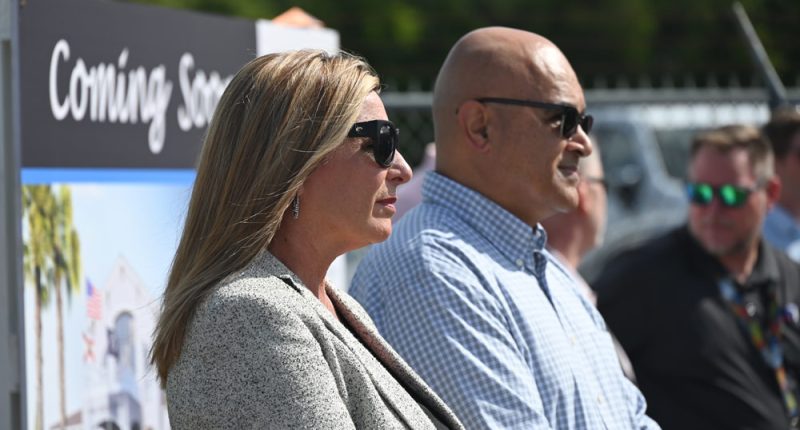
Facing a $2.2 million deficit in next year’s budget Flagler County Administrator Heidi Petito is asking the county’s five constitutional officers to consider reducing what had been a proposed 4 percent cost-of-living pay increase to 2 percent, a reduction that would all but erase the gap.
Most of the constitutional officers are willing to work with the county toward that end, with caveats. The constitutionals include Property Appraiser Jay Gardner, Clerk of Court Tom Bexley, Sheriff Rick Staly, Supervisor of Elections Kaiti Lenhart, and Tax Collector Shelly Edmonson.
The deficit was at $2.9 million when Petito last presented the numbers to the County Commission on June 9. The updated valuations from the property appraiser’s office, issued on Monday, raised the increase in taxable values enough to increase expected property tax revenue and lower the deficit to $2.2 million.
“As we prepare for our workshop on Wednesday, July 2, I am seeking advice on how we can close this gap,” Petito wrote the constitutionals after hours Monday. “These budgets were based on a 4% COLA (same as what the State was proposing, however they reduced theirs to 2%). One suggestion would be to reduce all the budgets to 2% COLA, thus potentially saving $1,973,705 (based on our calculations). This would leave a remainder of $226,120; however, this is [a] relatively small amount.” The parentheses were Petito’s. COLA is the acronym for cost-of-living adjustment, or raises reflecting the cost of inflation.
“What suggestions can you offer to help minimize the gap? What are your thoughts on a 2% COLA?” the administrator asked the constitutionals. She was not making a decision, only soliciting ideas–and support.
One of the charts Petito sent the constitutionals shows their requests and the difference year-over-year:

“Can you please validate the 2% reduction from your personnel services, if we were to reduce the COLA?” Petito asked above a second chart showing what each constitutional office would have to cut to reduce the COLA allocation:

The Sheriff’s Office and county government would take the biggest hit, the Supervisor of Elections the smallest. But the proportional cut would be the same across all constitutionals, whether one constitutional had a big budget increase or not.
“Considering the increase in medical insurance and inflation, I do not support a COLA of less than 4% for my employees,” Lenhart said. “I have 11 full-time staff members, and my total budget increase is less than ½ of one percent.” Lenhart’s proposed budget with that 4 percent increase nevertheless increases just 0.44 percent, or just under $12,000. Other constitutionals’ budgets all increase by substantially larger amounts.
“This is not the final product and has not been discussed with our Board yet,” Petito wrote in an email to FlaglerLive today.
The commission is meeting in workshop at 9 a.m. Wednesday to discuss the budget. The agenda and supporting documents had not been posted on the county’s website as of midafternoon today. The administration has tended to keep budget documents close to the vest until the last minute or past that, at times not posting a meeting’s back-up materials until after the meeting, or providing some of the material only upon request, which prevents informed public input or, for commissioners, preparation. For example, it isn’t clear how the figures Petito sent the constitutionals are or are not affected by line items that have been subjects of pointed discussion by commissioners such as beach protection or library funding.
Edmonson had not yet turned in her budget, even though Petito’s figures showed the Tax Collector’s proposed budget going from $4.7 million to $5.2 million, a 10.2 percent increase. “I am unsure where your staff obtained the estimated figures for our office,” Edmonson wrote Petito, sending her a summary of the office’s current budget.
Further, the Tax Collector’s office is fee-based, requiring no funding from the county. To the contrary: the office typically returns about $1 million to county coffers at the end of the fiscal year, Edmonson said, as revenue exceeds operational costs.
“As we continue working through our FY25–26 budget preparation, our current estimate for personnel services is $4,902,221,” Edmonson wrote Petito today. “This figure does not include any cost-of-living adjustments (COLAs) at this time. As you are aware, the costs associated with retirement contributions, health insurance, and other benefits continue to rise, further impacting our personnel services budget. Over the past several years, we have made meaningful progress in bringing our salaries in line with market rates to ensure we remain competitive. I would hate to see that momentum lost.”
In years that lacked cost of living raises, the tax collector wrote, wage gaps developed, triggering turnover and a loss of experienced staff to neighboring agencies that offered even “marginally” better pay, she wrote. “I strongly believe it would be a mistake to balance the budget on the backs of our staff. Doing so risks reversing the progress we’ve made and could once again lead to recruitment and retention challenges. For that reason, I would support a minimum 2% COLA for the upcoming fiscal year.”
But that would satisfy Petito’s approach.
Bexley’s proposed budget is less than $5 million, but the request reflects the proportionately largest year-over-year increase (almost 32 percent). A reduction in COLA would shave over $100,000 from that. Bexley is not opposed, but cautions: “When budget season began all the constitutional officers were given guidance suggesting we concentrate on employee retention. I think this was exactly what each of us decided to do and in doing so included a 4% cola increase in our budgets,” he said. “I think this would’ve been an ideal outcome, however, it appears the increase in property values and the net revenue will not support that full increase at the current millage rate. Although I think this could be viewed as a small setback, I am pleased with the boards efforts and I value my ongoing relationship.”
Bexley, like Edmonson, stressed the importance of continuing to attract and retain quality employees.
Gardner, the property appraiser, is entirely willing to work with Petito’s request. “That’s the one area where they can pick on me,” he said, though he doesn’t think the administration is picking on him. If anything, he worries about the dynamics between the administration and the County Commission, with some commissioners as if unwilling to see the difficulties Petito is facing.
“She’s doing what she can do,” Gardner said. “It doesn’t seem like the commission is being very nice to her. Some of the new commissioners, they’ve got an agenda to them, so I don’t know if she’s been enjoying her job.” (Commissioners Pam Richardson and Kim Carney were elected last November, Leann Pennington over two years ago.)
“I’m not here to buck the system and I understand money’s short. I’m never the problem anyway,” Gardner said. “Our budget is fairly slim. Each year no one spends any time on me because we’re very constant.” His budget would increase 7 percent, from $3.7 to $3.9 million. A COLA cut to 2 percent would shave off $67,000. “I’m bound by the state or the county on that kind of stuff. They don’t get to tell me much but they get to tell me that,” Gardner said.
Staly could not be reached before this article initially published.










